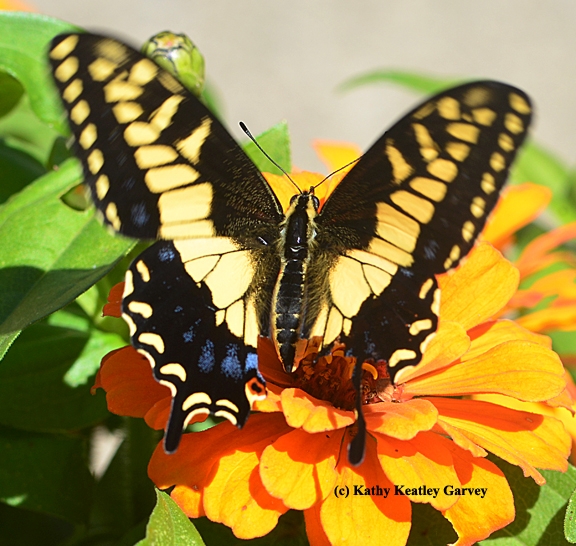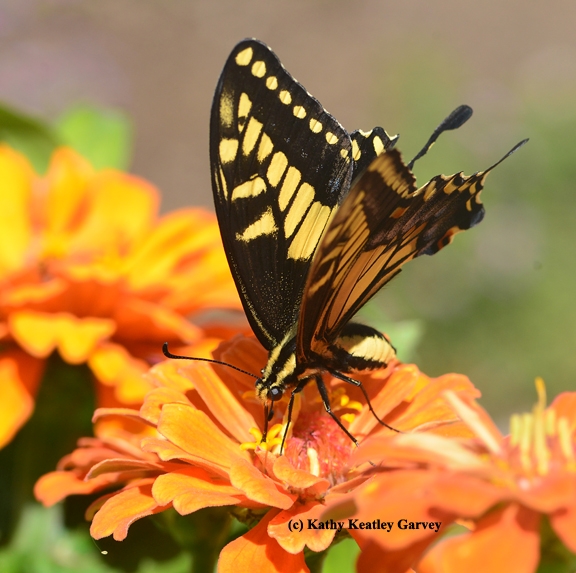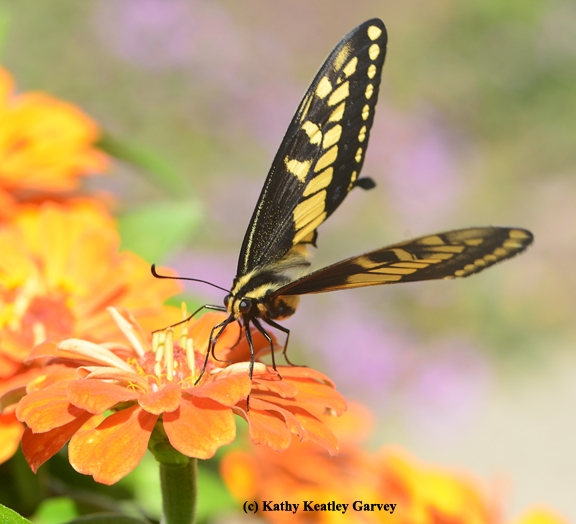Something was wrong.
The Anise Swallowtail (Papillo zelicaon) that fluttered into our bee garden last weekend and began nectaring on zinnia wasn't quite herself.
Her yellow and black coloring and the striking blue spot on the rear left wing looked fine. But the blue spot was MIA on the rear right wing. In fact, a huge chunk of that wing was MIA.
Its missing parts told part of the story: It had managed to escape a predator, probably a bird, praying mantis or spider.
"Good thing she survived," said butterfly expert Art Shapiro, distinguished professor of evolution and ecology at the University of California, Davis who monitors the butterflies of Central California. "It's a gravid female." (Distended with or full of eggs.)
"They have several generations (late February or March-October)," he writes on his website, Art's Butterfly World. The Anise Swallowtails breed largely on fennel or anise (Foeniculum vulgare) and poison hemlock (Conium maculatum). Both, he says, are naturalized European weeds.
The butterfly's usual range, according Wikipedia, "extends from British Columbia and North Dakota at its northern extreme, south to the Baja California peninsula and other parts of Mexico. It is occasionally reported from the southeastern United States, but its normal range does not extend east of New Mexico. In all the more northerly parts of the range, the chrysalis hibernates."
The Anise Swallowtail is commonly found in fairly open country, Wikipedia says, and "is most likely to be seen" on bare hills or mountains, in fields or along roadsides. "It is often seen in towns, in gardens or vacant lots."
We've seen P. zelicaon on plants from A to Z: anise along roadsides and zinnias in our garden.
Zelicaon on a zinnia...
Attached Images:


